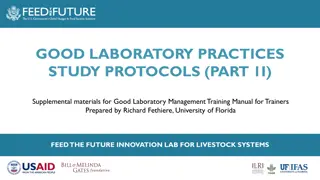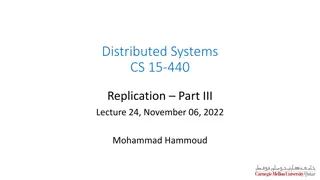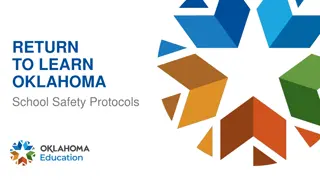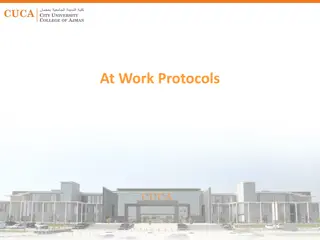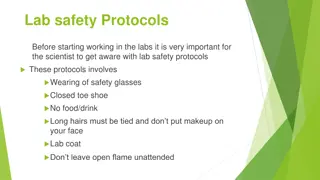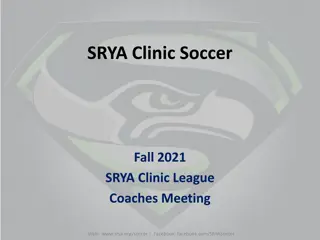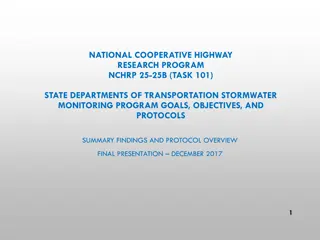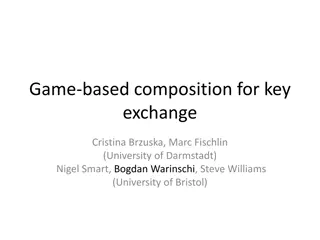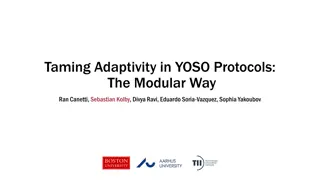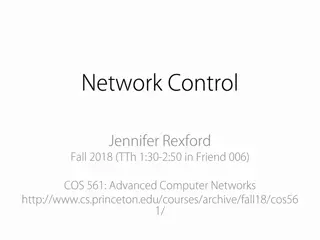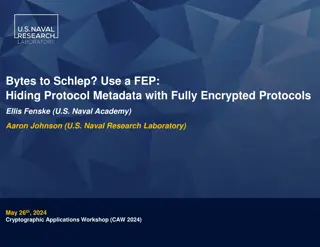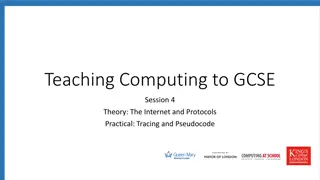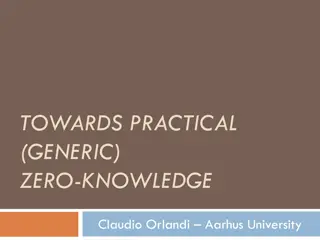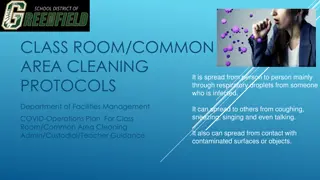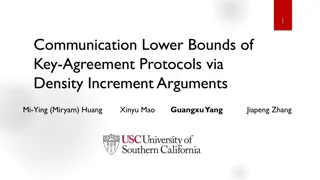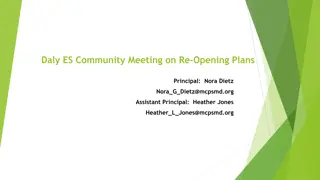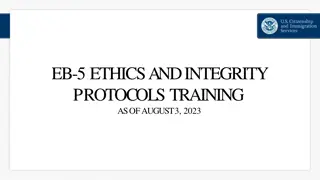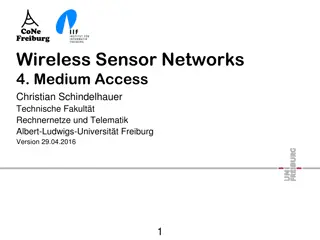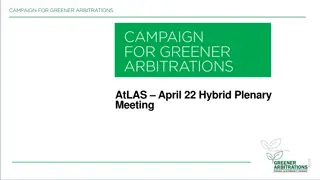
Effective Practices in Collaborative Data Teams: Protocols and Outcomes
Explore the world of professional development in collaborative data teams, focusing on protocols, foundational processes, effective teaching practices, formative assessment, and school-based implementation. Understand the purpose of collaborative teams and develop meaningful learning targets while enhancing your coaching skills for supporting school-wide implementation. Learn about consensus, communication norms, roles, and advanced collaborative processes to improve data-driven decision-making. Reflect on protocol elements and plan for their use in team meetings for enhanced outcomes.
Download Presentation

Please find below an Image/Link to download the presentation.
The content on the website is provided AS IS for your information and personal use only. It may not be sold, licensed, or shared on other websites without obtaining consent from the author. If you encounter any issues during the download, it is possible that the publisher has removed the file from their server.
You are allowed to download the files provided on this website for personal or commercial use, subject to the condition that they are used lawfully. All files are the property of their respective owners.
The content on the website is provided AS IS for your information and personal use only. It may not be sold, licensed, or shared on other websites without obtaining consent from the author.
E N D
Presentation Transcript
P r o f e s s i o n a l D e v e l o p m e n t t o P r a c t i c e P r o f e s s i o n a l D e v e l o p m e n t t o P r a c t i c e Collaborative Data Teams Protocols The contents of this presentation were developed under a grant from the US Department of Education to the Missouri Department of Elementary and Secondary Education (#H323A120018). However, these contents do not necessarily represent the policy of the US Department of Education, and you should not assume endorsement by the Federal Government.
P r o f e s s i o n a l D e v e l o p m e n t t o P r a c t i c e Getting Started Introduction to Missouri Collaborative Work Use Getting Started Guide to determine starting point and scope of learning Focus Areas Collaborative Work Training Wrap Up Activity Follow-up to Training Collaborative Data Teams (CDT) Effective Teaching/ Learning Practices (EP) Common Formative Assessment (CFA) Data-Based Decision Making (DBDM) School-Based Implementation Coaching Overview and Purpose of CFA Overview and Purpose of DBDM Overview and Purpose Collaborative Teams Overview and Purpose of EP Overview and Purpose of Coaching for supporting school-wide implementation Data Team Process Steps Sequence and Examples Developing Meaningful Learning Targets Foundational Processes 1. Collect and Chart Data 2. Analyze and Prioritize 3. SMART Goal 4. Instructional Decision Making 5. Determine Results Indicators 6. Ongoing Monitoring Agendas Communication Norms Roles Assessment Capable Spaced versus Assessment Capable Learners Learners Spaced versus Massed Massed Quality Assessment Design Critical skills of coaching Reciprocal Teaching Feedback Advanced Processes Selected Response Items Constructed Response Items Performance Events Consensus Collaborative Skills Protocols Coaching in Practice Activity: Wrap Up/Overview of Next Steps Activity: Wrap Up/Overview of Next Steps Activity: Wrap Up/Overview of Next Steps Activity: Wrap Up/Overview of Next Steps Activity: Wrap Up/Overview of Next Steps Follow-Up Based on Data: Coaching and Revisiting PD Follow-Up Based on Data: Coaching and Revisiting PD September 2013
P r o f e s s i o n a l D e v e l o p m e n t t o P r a c t i c e Collaborative Data Teams (CDT) Overview and Purpose Collaborative Teams Foundational Processes Foundational Processes: Protocol Agendas Communication Norms Roles Advanced Collaborative Processes Consensus Collaborative Skills Protocol
P r o f e s s i o n a l D e v e l o p m e n t t o P r a c t i c e Outcomes Understand what protocols are and identify key elements of protocols. Examine and evaluate examples of protocols. Reflect on current practice and plan for use of protocols in Collaborative Team meetings.
P r o f e s s i o n a l D e v e l o p m e n t t o P r a c t i c e Essential Questions How do collaborative teacher teams foster adult dialogue and collaboration that results in high levels of student learning? What are the structural and cultural conditions that insure equity of participation in dialogue as we learn to adapt our practice to enhance the learning of all students?
P r o f e s s i o n a l D e v e l o p m e n t t o P r a c t i c e Meeting Norms Begin and end on time Be an engaged participant Be an active listener open to new ideas Use notes for side bar conversations Use electronics respectfully
P r o f e s s i o n a l D e v e l o p m e n t t o P r a c t i c e PROTOCOLS Thinking about the term Protocols: 1) Complete the What I Know and What I Want To Know columns of your KWL Chart and (2 minutes) 2) When instructed, stand and find a partner you do not know or with whom you rarely get an opportunity to talk. Decide on who will be A and B . A shares his/her ideas from the chart with B (no talking) (1 minute) B summarizes A s main points back to A. (30 seconds) B shares his/her ideas from the chart with A (no talking) (1 minute) A summarizes B s main points back to B. (30 seconds) 3) Return to seats and add / revise your ideas to any column
P r o f e s s i o n a l D e v e l o p m e n t t o P r a c t i c e PROTOCOLS Definition A protocol consists of agreed upon guidelines/norms for a conversation. A structure that permits very focused conversations to occur. It is facilitated. We use protocols for looking at student and adult work, giving and receiving feedback, solving problems or dilemmas, observing classrooms or peers, to push thinking on a given issue, and to structure a discussion around a text. National School Reform Faculty / Harmony Education Center www.nsrharmony.org Protocols for Professional Learning, Easton
P r o f e s s i o n a l D e v e l o p m e n t t o P r a c t i c e PROTOCOLS Whenever talk has important consequences, we deserve a chance to think through what we want to say, and in an environment where what we choose to say can be heard and respected. In forcing transparency, protocols again teach us habits that we wish we already had; to take time to listen and notice, to take time to think about what we want to say, to work without rushing, to speak less (or speak up more). The Power of Protocols: An Educator s Guide to Better Practice, McDonald, Joseph P. (2007)
P r o f e s s i o n a l D e v e l o p m e n t t o P r a c t i c e PROTOCOLS Read: A Rationale for Protocols: Using the reading strategy Left Margin / Right Margin As you read: 1. In the left margin, summarize each section of reading in 10-words or less. 2. In the right-hand margin, ask questions you have about the reading. 3. When you are finished reading, choose one key idea from your left margin and choose one key question from the right margin to share. (15 minutes)
P r o f e s s i o n a l D e v e l o p m e n t t o P r a c t i c e PROTOCOLS Examining a Protocol 1) Return to the definition and quotes. Read each and underline key points you would see as standards you would look for in a protocol. (2 minutes) Then read: The Constructivist Tuning Protocol and Peeling the Onion: Developing a Problem Protocol 2) As you read, Determine if each meets the standards. Add to your KWL Chart Write a summary statement of your learning
P r o f e s s i o n a l D e v e l o p m e n t t o P r a c t i c e Prerequisites and tips for effective use of protocols A responsive and attentive facilitator Protected meeting time Norms Make the purpose meaningful Purposefully aligning the protocol and the purpose Build background knowledge for all participants on the purpose and use of protocols Model and review the protocol with participants Follow the steps of the protocol Allow time to reflect on the effectiveness of the protocol The Power of Protocols: An Educator s Guide to Better Practice, McDonald, Joseph P. (2007) National School Reform Faculty / Harmony Education Center www.nsrharmony.org See also: http://www.nsrfharmony.org/protocol/doc/responsive_facilitation.pdf
P r o f e s s i o n a l D e v e l o p m e n t t o P r a c t i c e Next Steps: Action=Results Where are we in the use of protocols? Would the use of protocols improve our collaboration? How do we use this information? What more do we need to know? What are our next steps? How should we structure our conversations?
P r o f e s s i o n a l D e v e l o p m e n t t o P r a c t i c e Practice Profile Missouri Collaborative Work Practice Profile Foundations present in the implementation of each essential function: Commitment to the success of all students and to improving the quality of instruction. Collaborative Data Team (CDT) Unacceptable Variation (Follow-up professional development and coaching is critical.) Monthly agenda and minutes show none of the items are addressed. Close to Proficient (Skill is emerging, but not yet to ideal proficiency. Coaching is recommended.) Exemplary Essential Functions Ideal Implementation (All items are in place.) Proficient Evidence Teams address each of the following at least twice monthly, as evidenced by agendas and minutes. 1.Discussing data and monitoring student progress 2.Identifying instructional practices that result in student learning 3.Identifying students needing re-teaching 4.Aligning instructional practices to academic standards Teams meet weekly for approximately 45 minutes, with appropriate team members participating. Teams address each of the following at least monthly, as evidenced by agendas and minutes. 1.Discussing data and monitoring student progress 2.Identifying instructional practices that result in student learning 3.Identifying students needing re-teaching 4.Aligning instructional practices to academic standards Monthly agendas and minutes show some but not all of the four items are addressed. Agendas/Minutes from each CDT indicate areas of focus addressed. Educators collaboratively develop common purposes and goals for improved student outcomes within a culture that embraces continuous school improvement. 1 Meetings occur regularly as scheduled, but for less than 45 minutes or occur alternating weeks. Meeting times are irregular, infrequent, and/or often cancelled. Agendas include a few recommended items, no recommended items, or are not developed. Building schedule for CDT meetings, as well as minutes confirming fidelity to schedule. Agendas/Minutes from each CDT indicate areas of focus addressed. Educators effectively implement group processes (agendas, minutes, dialogue, and discussion, norms, logistics, consensus, roles, decision-making skills, protocols). Teams utilize agendas which include: Team/Group Name Date/Time/Location Outcomes (includes required materials) Past items to review New items Celebrations Norms Next meeting date Teams utilize minutes and communication which include: purpose for the meeting where and when held list of the attendees what was achieved during the meeting decisions made at the meeting actions that were agreed, include the action itself, who it was assigned to, and the completion date central place to store document (minutes won t get lost in inbox or on server) easy access for all participants to provide updates and comments distributed to all stakeholders Agenda include most recommended items, but not all. 2 Minutes include most recommended items, but not all. Minutes include a few recommended items, no recommended items, or are not developed. CDT Minutes are archived and Communication structure is established. [Continued] Educators effectively implement group processes (agendas, minutes, dialogue, and discussion, norms, logistics, consensus, roles, decision-making skills, protocols).
P r o f e s s i o n a l D e v e l o p m e n t t o P r a c t i c e Implementation Fidelity If partially or no, please explain. Yes Partially No 1.Team meets weekly for approximately 45 minutes 2.Team agendas include all of the following. Team/Group Name Date/Time/Location Outcomes (includes required materials) Past items to review New items Celebrations Norms Next meeting date 3.Team minutes include all of the following. purpose for the meeting where and when held list of the attendees what was achieved during the meeting decisions made at the meeting actions that were agreed, include the action itself, who it was assigned to, and the completion date 4.Team meeting minutes are accessible to all team members. 5.Team norms are established. 6.A team norm refers to valuing all team members input. 7.A team norm refers to being solution-oriented. 8.Team roles are designated and periodically rotate. Team addressed the following at least twice monthly 9.Discussing data and monitoring student progress 10.Identifying instructional practices that result in student learning 11.Identifying students needing re-teaching 12.Aligning instructional practices to academic standards Total
P r o f e s s i o n a l D e v e l o p m e n t t o P r a c t i c e Protocol Resources National School Reform Faculty / Harmony Education Center www.nsrharmony.org http://www.tcpress.com/pdfs/mcdonaldprot.pdf http://www.learningforward.org/docs/leading-teacher/march12_tool.pdf?sfvrsn=2 http://www.learningforward.org/docs/jsd-summer-1999/mitchell203.pdf?sfvrsn=2 http://www.learningforward.org/docs/tools-for-learning-schools/tools2- 09.pdf?sfvrsn=2 http://www.ascd.org/Publications/Books/Overview/Protocols-for-Professional- Learning.aspx Protocols for Professional Learning Conversations: Cultivating the Art and DisciplineGlaude, Catherine (2011) Protocols for Professional Learning Easton, Lois Brown (2009) The Power of Protocols: An Educator s Guide to Better Practice, McDonald, Joseph P. (2007)

